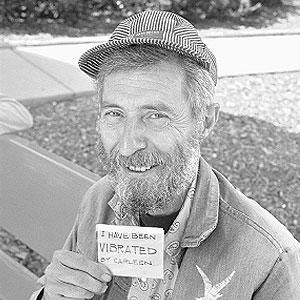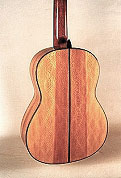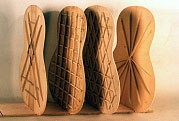| In Memoriam: Frederick Thomas Dickens Passed on November 8, 2000 |
||
|
||
| Frederick Thomas Dickens was born January 10, 1935 in Bogalusa, Louisiana, and died November 8, 2000 in Lynchburg, Virginia. He served in the Navy and attended Southwestern Louisiana Institute (now USL) in Lafayette, Louisiana, where he graduated with a degree in physics. He went to work for Western Electric at Bell Laboratories in Whippany, New Jersey in 1960, then worked for AT&T/Bell Labs from 1962 until his retirement in 1987. He was married and had two children. From early childhood Fred was always taking things apart and rebuilding them: crystal sets, model airplanes and boats, small engines, large engines, bicycles, motorbikes, air rifles, most anything that had plenty of parts. In later years, he continued to take things apart and reassemble them or build new and improved ones. His crystal set was replaced by powerful shortwave radios, the model airplanes and boats got larger and more sophisticated, the small engines became single-cylinder miniature hit-and miss-ones. The large engines were built to fit into the motorcycle frames that he constructed and competed on in observed trials. The air rifles became more powerful and accurate, and Fred built all parts on his lathe and milling machine, even to checkering the stocks. His latest pistol was used to shoot pasta at carpenter bees feeding on the house. The bicycle evolved into an elaborate recumbent design that he was working on when he died. While at Bell Labs he worked in the Power Supply Department building power supplies for the transatlantic cable. His power supplies were also found in many of AT&T's telephones. He received the Distinguished Technical Staff Award for Sustained Achievement in 1984.
He first got interested in instrument building in 1966 when he built his first guitar. He took apart an old guitar he had purchased in Mexico when he was twelve to study the construction. He began keeping detailed records with guitar #15 in 1968 using red cedar for the top. Ever the stickler for words, he wrote, “The cedar will be called 'Egyptian Dragoon Brown Spruce' from the Aswan Dam Preserve.” He began making his fret boards out of black phenol fiber because he felt that the phenol was more stable than ebony. He began making his own rosettes in 1969. He also constructed a banjo in that year. The part of guitar construction that he enjoyed most was carving the neck, especially the heel. One of my most fond memories is of watching him as he worked on the mahogany to create a beautiful sculpture, which he would decorate with a beautifully finished, singing body. In 1975 Fred began a series of experiments (which he would continue until his death) to make “various acoustic measurements on the guitar and its parts. The object of the experiments was to determine the response vs. frequency of the instrument and its various parts in an effort to set the various resonances at their ideal positions.” Using a special sound room which he built, he did experiments to: determine the effect of the height of the sides of a standard classical guitar on air resonance frequency; test different strutting patterns on the backs and tops of guitars including Cartesian, circular, lattice, traditional, and X bracing; study the effect of soundposts in guitars; chart the air modes of his and others' guitars; study the relationship between the Helmholtz resonance and volume; and test a new bridge design using graphite-reinforced epoxy which he called his “magic bridge.” In 1977 Fred attended the 9th International Conference on Acoustics in Madrid where he presented a paper, “Tuning the Eigenmodes of Free Violin and Guitar Plates by Chladni Patterns” with Carleen Hutchins. He wrote for the CAS Newsletter but refused to submit articles unless he was 100% certain of the data. He also gave lectures at local colleges in New Jersey. In his lifetime Fred built ninety-four classical guitars, four steel string guitars, a flamenco guitar, a banjo, and a harpsichord soundboard. Trying to understand plate tuning in the guitar was his life's goal. — Pauline Dickens
Although an excellent craftsman, Fred viewed instrument making (or the making of anything else for that matter) as a vehicle to understanding the science and principles behind the result. He constantly strove to understand the physics, and the nature of materials and their interaction. The search was always more important than the product, although the guitar was most often the chosen teacher. As a result, Fred was the work in progress. Understanding the universe was his goal. Fred had little tolerance for ignorance masquerading as knowledge. Half-baked theories were always exposed to the light of his more rigorous testing. I was very fortunate to make Fred's acquaintance shortly after he and his wife moved to Virginia. Our mutual interest in instrument making and his willingness to teach some of those scientific principles I had neglected to consider contributed to a friendship now sorely missed. Fred's gift was his willingness to patiently share what he had learned with those willing to listen. I only wish more makers would have had the opportunity to learn from his experience and example. — James Jones When I began music acoustics research in 1970 I was intrigued by articles written by Fred T. Dickens, which combined an honest, homey style with advanced ideas on guitar behavior. I began writing to Fred, and in 1982 during a research tour of USA, we stayed some days with Fred and Pauline. Their company was relaxing and humanizing after intense work and travel. We shared notions of guitars and violin physics, methods of working advanced instruments, the nature of those involved in such a rare field of endeavor, and the big questions: life, the universe, and everything. We ate and drank with Fred and Pauline and became friends. I continued writing to Fred and Pauline up until the time of his death, and in fact was answering one of Fred's marathon letters when Pauline wrote to inform me he had died. Fred was an honest, practical man. His work at the Bell Laboratories was respected because of his integrity with results. He was meticulous in research and true with his friends. His marriage to Pauline was caring and creative, and their love for each other was unmistakable. I admire them both and wish Pauline comfort and peace in her loss of a wonderful husband. — Graham Caldersmith |
||
Top of Page |



